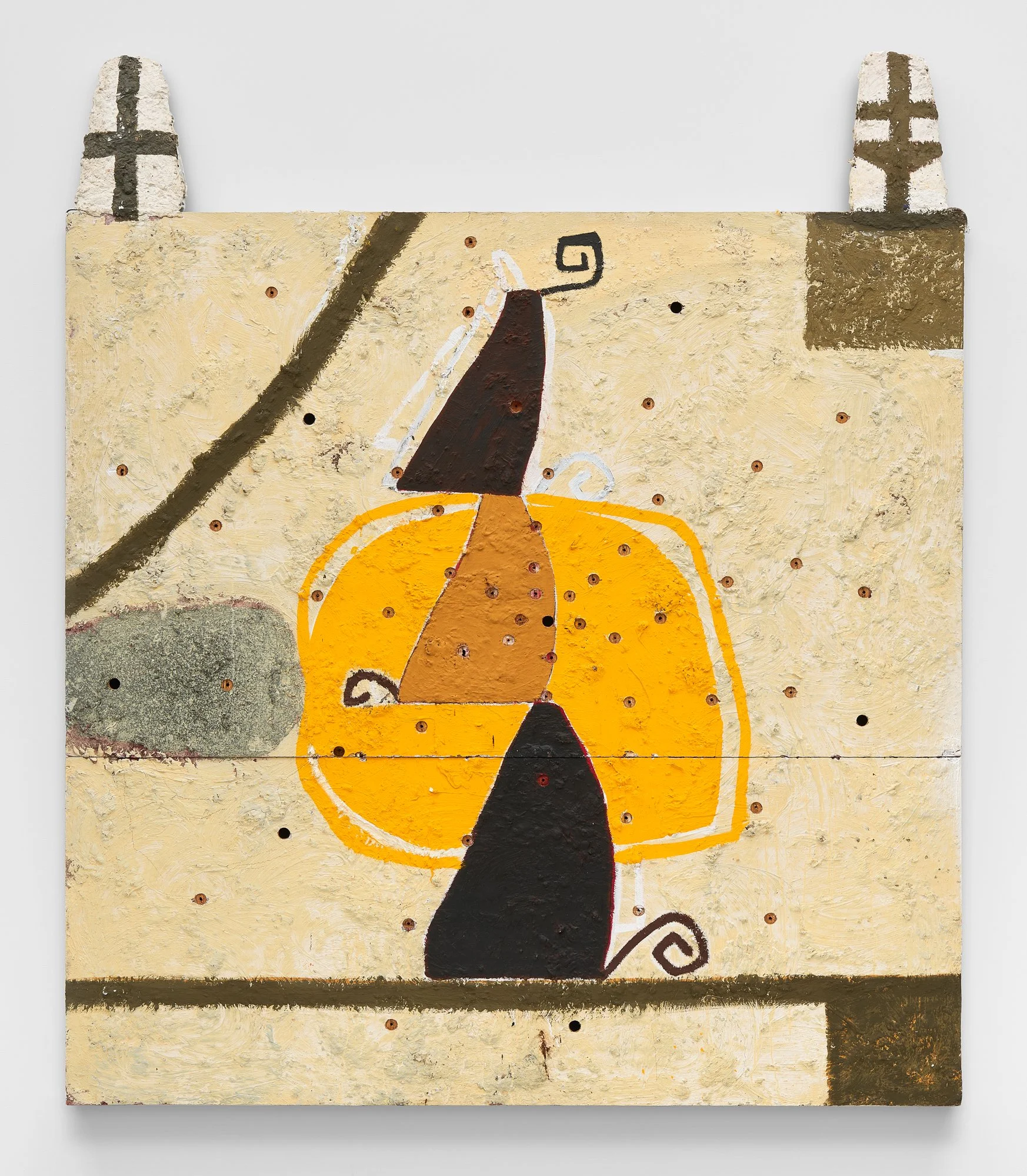Lorna Simpson
“Earth & Sky,”
New York, 22nd Street
With ‘Earth & Sky,’ Lorna Simpson debuts a new body of work exploring our relationships––physical and metaphysical––to unseen forces that work upon us individually and generationally, alternately challenging and empowering our sense of our own humanity. The exhibition encompasses a series of massive paintings inspired by a 1929 textbook ‘Minerals from Earth and Sky,’ along with a pair of monumental paintings depicting the impact of fired bullets. Presented in a temple-like atmosphere in which both human scale and geological time are upended, Simpson’s works are accompanied by a new text-based wall sculpture referencing a story recounted in the same textbook, describing the astonishment of an unnamed Black sharecropper when a meteorite falls from the sky and lands at his feet, still warm to the touch from its dark flight.
Lorna Simpson studio, Brooklyn NY, 2024 © Lorna Simpson. Photo: James Wang
With their monochromatic palette of iridescent paint in silvery greys and saturated blacks, Simpson’s paintings invite the viewer to contemplate both the beauty of natural forces and the impact of violence that materialize from sources unseen, whether interstellar objects hurtling towards Earth or lethal bullets dispatched from weapons. The ancient sculptural forms and shimmering textures of the space rocks take on the aspect of ominous abstract sculptures crafted by time and velocity, while silk-screened bullet holes are alchemically transformed into compositions which from a distance resemble benevolent constellations of stars. Together, Simpson’s incandescent paintings draw attention to the danger hidden in beauty and, conversely, the beauty hidden in danger. Bringing us face to face with phenomena rarely witnessed by the human eye, they ask us to locate ourselves in the context of the cosmos.
Simpson’s text-based wall sculpture ‘Earth & Sky’ conceptually connects her meteorite and bullet hole paintings while evoking many of the artist’s early celebrated text-and-image works, and further elaborating on the themes of identity, representation and authorship that have long defined her oeuvre. On perpendicular walls, two versions of an excerpt from the aforementioned historical textbook mirror one another, their pin-mounted letters casting fugitive shadows. Here Simpson shares the story of the meteorite and the Black tenant farmer in Mississippi who found it––a man unnamed in the original volume but revealed by the artist’s own recent research to have been called Ed Bush. By removing and replacing several key words in the sentences, Simpson succeeds in reorganizing meaning across time, bringing a new dimension to the way we receive and value a human story.







